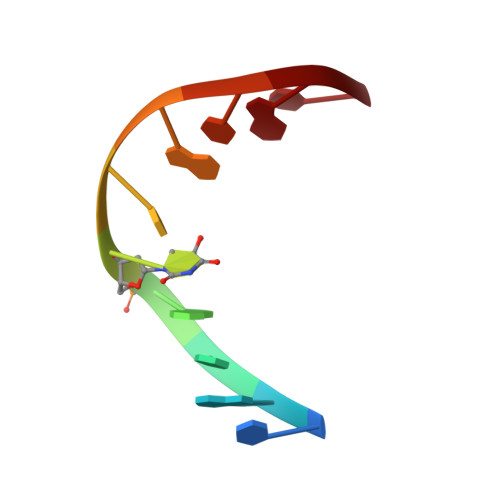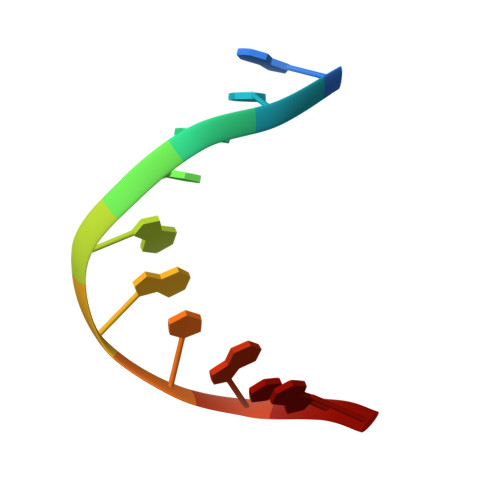Solution structure of a DNA decamer duplex containing the stable 3' T.G base pair of the pyrimidine(6-4)pyrimidone photoproduct [(6-4) adduct]: implications for the highly specific 3' T --> C transition of the (6-4) adduct.
Lee, J.H., Hwang, G.S., Choi, B.S.(1999) Proc Natl Acad Sci U S A 96: 6632-6636
- PubMed: 10359763
- DOI: https://doi.org/10.1073/pnas.96.12.6632
- Primary Citation of Related Structures:
1CFL - PubMed Abstract:
The pyrimidine(6-4)pyrimidone photoproduct [(6-4) adduct] is one of the major photoproducts induced by UV irradiation of DNA and occurs at TpT sites. The (6-4) adduct is highly mutagenic and leads most often to a 3' T --> C transition with 85% replicating error frequency [LeClerc, J. E., Borden, A. & Lawrence, C. W. (1991) Proc. Natl. Acad. Sci. USA 88, 9685-9689]. To determine the origin of the specific 3' T --> C transition of the (6-4) adduct, we have used experimental NMR restraints and molecular dynamics to determine the solution structure of a (6-4)-lesion DNA decamer duplex that contains a mismatched base pair between the 3' T residue and an opposed G residue. Normal Watson-Crick-type hydrogen bonding is retained at the 5' T of the lesion site. The O2 carbonyl of the 3' T residue forms hydrogen bonds with the imino and amino protons of the opposed G residue. This potential hydrogen bonding stabilizes the overall helix and restores the highly distorted conformation of the (6-4) adduct to the typical B-form-like DNA structure. This structural feature can explain the marked preference for the insertion of an A residue opposite the 5' T and a G residue opposite the 3' T of the (6-4) lesion during trans-lesion synthesis. Thus these insertions yield the predominant 3' T --> C transition.
Organizational Affiliation:
Department of Chemistry, Korea Advanced Institute of Science and Technology, 373-1, Kusong-dong, Yusong-gu, Taejon 305-701, Korea.














